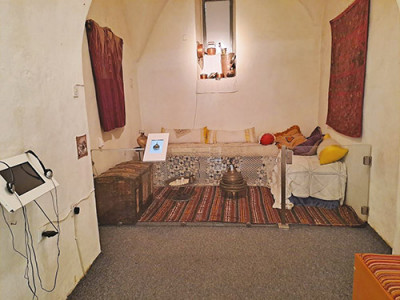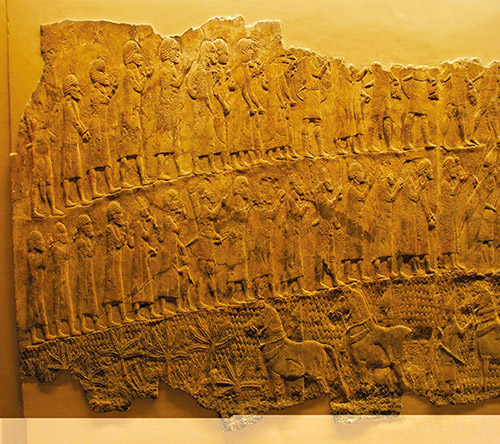
(Much of the information for this article is taken from on-site explanations as well as from Rav Zamir Cohen’s ארכיאולוגיה תנ”כית.)
In the Shfela region of Israel, not far from modern day Beit Shemesh, lie the ruins of ancient Lachish. Although at first glance it may seem like just another mountain, Lachish and its remains tell the story of life in the region and the battles that took place there.
Lachish is first mentioned in the Book of Yehoshua as one of the Canaanite cities conquered by Yehoshua in the Land of Israel (Yehoshua 10). Later on, Rechovam, the son of Shlomo Hamelech, fortifies the city of Lachish (Divrei Hayamim 11) because of its strategic importance. Lachish becomes one of the most important cities in Judea, second only to Yerushalayim, and is thus fortified appropriately.
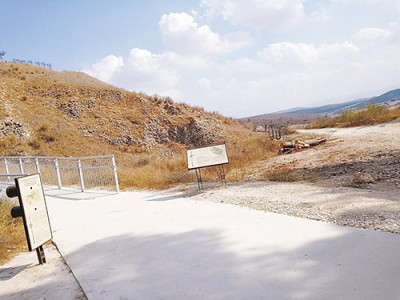
Let’s walk up the ramp and enter the city of Lachish. As we walk, we can see the remains of the city wall on our right. This was also strategic as soldiers often carried their shields in their left hands and their weapons in their right. Attacking armies would have difficulty defending themselves as they approached Lachish with the city wall on their right. As we enter the gate of the city, it is evident that this did not just serve as an entrance to the city. The various rooms and chambers on either side of this deep city gate were the center of the city. It was the center of commerce, where the leaders convened and where, perhaps at some time, there was some sort of cult worship.
We’ll proceed into the city, where we can see the remains of the foundation of a large palace complex, believed to be originally dated to the reign of King Chizkiyahu. This was the seat of the governor of the city, representative of the king of Judea. Perhaps it was here that King Amatziah was murdered when he fled from Yerushalayim.
Throughout the Tel, remains of the homes of the common people of Lachish have been found. It appears that the citizens of Lachish were quite poor due to their simple dwellings.
But perhaps among the most fascinating finds in the city of Lachish are the remains of the battle against Ashur, such as helmets, spears and arrows. In Melachim Bet (Chapters 18-19), we learn that Shalmanesser, King of Ashur, conquers the 10 tribes of Malchut Yisrael and sends them into exile. Sancheirev then comes to power as king of Ashur and proceeds to attack the kingdom of Judea. He divides his forces between Yerushalayim and Lachish. We all know of the tremendous miracle that saved Yerushalayim from Sancheirev, but what happened first at Lachish? The pasuk tells us that Sancheirev conquered the fortified cities of Judea, but do we know anything more about the battle?
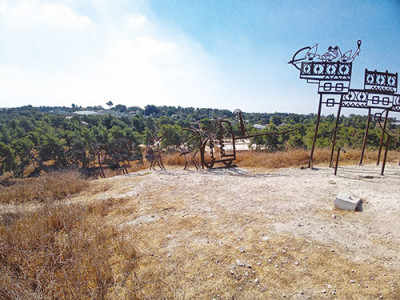
Archeological excavations in Sancheirev’s palace in Ninveh revealed a large relief depicting the capture of Jewish Lachish and the presentation of the Jewish prisoners of war to Sancheiriv himself. An inscription on the relief is translated to say, “I, Sancheirev, king of the world and king of Ashur, sit on the chair of judgment before the city of Lachish and authorize its destruction.” What is even more fascinating is that the depiction of the capture of Lachish in Sancheirev’s palace in Ninveh seems to match almost identically to the excavations we find in Lachish, here in Israel. If we can imagine the king’s artist facing the city wall, the relief shows the siege ramp that the Assyrian army used to ascend the city and conquer it. (There are archeologists that debate this dating of the city wall, but this article is not written according to that position.)
On top of the city walls, there is evidence of the counter-ramp built by the Jews of Lachish as they saw the Assyrian army advancing. They actually destroyed their homes in order to add height to the city wall and throw stones and weapons on the Assyrian soldiers. Jews showering their enemy with stones and torches is also depicted on the relief.
As we know, Ashur did conquer Lachish and take its citizens captive. They then proceeded to lay siege to Yerushalayim. It’s fascinating to see that the Navi Yeshayahu promises that Sancheirev will not erect a siege ramp to Yerushalayim (Melachim B 19) as we see he did to Lachish.
Once Sancheirev left the Land of Israel and returned to Ninveh, the Jews rebuilt Lachish, and it was also a final stance in the battle against Bavel on the eve of the destruction of the first Beis Hamikdash in 586 BCE. Remains of ancient Hebrew writing found on potsherds near the city gate describe how they are waiting for the fire signals of Lachish because they can no longer see Azeikah. There are various theories as to the author of this letter, but perhaps we are again witness to the final days before the capture of Lachish by the Babylonian army.
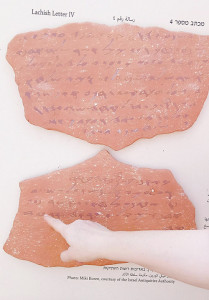
A visit to Tel Lachish, this unassuming small hill near Beit Shemesh, tells two fascinating stories of darker times in Jewish history. This was the beginning of our exile. May we merit soon to see the final redemption and ingathering of the exiles this coming Nissan!
Recognize this place? Be the first to email the correct answer to [email protected] and receive a free drink at Lazy Bean Café in Teaneck! Stay-tuned to learn more about it in our next article!
Hava Preil is an enthusiastic Licensed Israeli Tour Guide. She grew up on the Upper West Side of Manhattan and holds an MA in Judaic Studies. Hava has developed and taught accredited courses in Tanach and Jewish Ethics for Naaleh/Woodmont College and Cybersem. She currently lives in Givat Ze’ev, Israel with her family. Hava can be reached at IL:054-844-1579, USA: 845-391-0438 or at [email protected].
